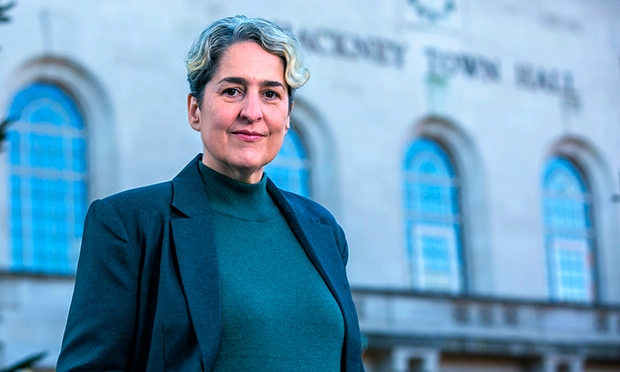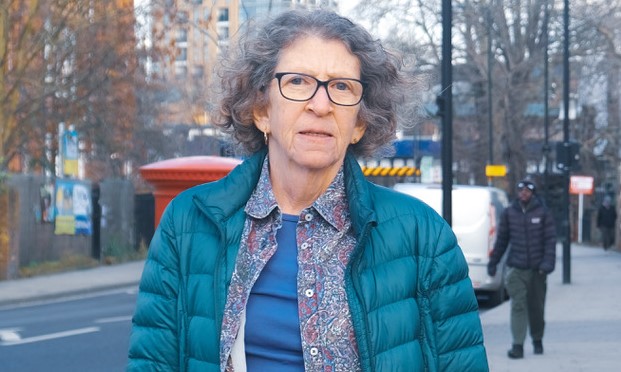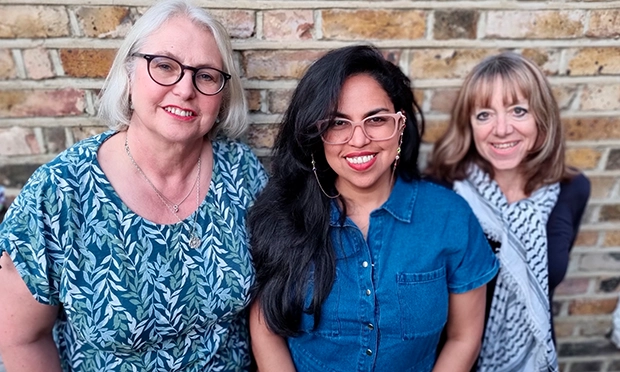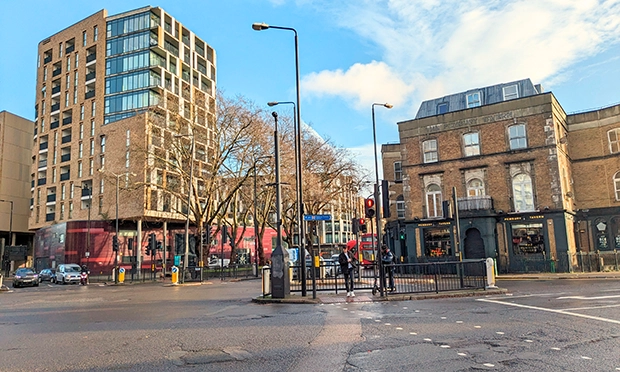Hackney mayor defends LTNs and air quality plans following criticism from residents

Hackney Mayor Caroline Woodley. Photograph: Hackney Council
Mayor Caroline Woodley has defended the council’s air pollution plans following sharp criticism from residents about the impact of diversions and low traffic neighbourhoods (LTNs).
A meeting of the full council, where members of the public are encouraged to put questions to the Town Hall, became heated when a resident said the council’s plans were harming children.
Clair Battaglino said there has been no explanation about the diverted traffic from the proposed A107 bus gate in Upper Clapton.
“I suspect it will relocate to roads like Dalston Lane, where residents live closer to the road in higher numbers, with children in nurseries and schools inhaling increased pollution. How is this healthy, ‘green’ or just?” she asked.
Resident Matt Albrow also pressed the council on the negative effects of LTNs.
“Four years on from imposing [LTNs], certain residential roads now suffer even greater negative impacts from higher levels of traffic and increased collisions,” he said.
“Where is the promised mitigation to protect the wellbeing of impacted residents?”
Mayor Woodley acknowledged the council’s “transformative” plans to cut traffic and encourage more sustainable transport would, as in other boroughs, have a temporary impact on certain areas.
She said, however, that “although one can expect short-term disruption and displacement of traffic over time, overall traffic across the area should decrease, improving air quality”.

Local resident and air quality champion Clair Battaglino
Battaglino pressed the mayor on whether closing roads to improve air quality had seen the desired effect of a “modal shift”, where people opt for cycling, walking or public transport instead of motor vehicles.
She spoke of the “risk of displacing or relocating that traffic onto residential roads and, more importantly, roads where there are nurseries and schools”.
“Will the council agree to have an independent examination of where that traffic is going to go?
“My lungs can’t take it. Those babies are being harmed.”
Mayor Woodley stressed that the council was making a “necessary change to the borough for the greater good and primarily for the good of the residents of Hackney”.
“Pembury Circus in particular is a really dangerous junction,” she said. “We’ve had two crash incidents there, and we have to make a change.
“I understand that it creates pressure in the short term and I understand your frustration with that, but if we don’t do anything the traffic will just increase.
“We have to take the stand, and with the work we’re doing on Amhurst Road, we will remove one of the arms of that dangerous junction.
“It’ll be cleaner, it’ll be greener, it’ll bring some relief.”

Cllr Claudia Turbet-Delof (centre) with her Independent Socialist colleagues. Photograph: courtesy Hackney Independent Socialist Group
In a written question to the council, Cllr Claudia Turbet-Delof (Independent Socialist) quizzed the cabinet over air quality, after reports that a rising numbers of children had been admitted to hospital with breathing difficulties.
She asked if the borough’s roads meet the World Health Organisation (WHO) guidelines for ambient air pollutants.
Mayor Woodley said she was aware of recent local concern about children in hospital with breathing problems, and recognised that residents were “understandably” worried about air quality.
“While Hackney now meets the National Air Quality Strategy targets at all but two of our monitoring locations, we have yet to meet the WHO Guideline Values at any location,” she said.
“This is unfortunately a common challenge across the country. The WHO has set a series of interim targets to make achieving compliance a staged process, and we are working towards meeting these interim targets.”
Although there was “more work to be done”, the mayor pointed to the successful rollout of new policies to reduce toxic air in the borough.
She said “Hackney was one of only seven local authorities to see a reduction in overall traffic between 2021 and 2022”.
On Monday 16 September, the Health in Hackney scrutiny commission reviewed its annual report on the health impact of air pollution in the borough, including a progress update on the council’s Air Quality Action Plan.
Data showed that despite air quality in the borough seeing a general improvement, the rate of decline had slowed — with small increases in nitrogen dioxide (NO2) in some places, such as busy roads managed by Transport for London (TfL).

Pembury Circus. Photograph: Hackney Council
Mayor Woodley said these hotspots included Pembury Circus and Amhurst Road, both near Hackney Central station.
“Hackney has one of the most comprehensive networks of air quality monitoring in the country,” she said. “And as with other traffic schemes, air quality will be monitored in the area.”
She added that the council “recognises” that “certain sections of our road network that have not benefited from the LTNs”, and that it would go further to bring down traffic on main roads.
“As a first step to this, it is preparing to publish a new mains road report. [This is] a technical note bringing together all of the borough’s current main roads network, and putting this work and future schemes in the context of the Mayor of London’s net-zero carbon target to reduce traffic in London by 27 per cent by 2030.”
New measures to improve air quality brought in over the last four years include anti-idling campaigns, cargo bike grants, and more electric vehicle charging points.
The Town Hall has also launched a new air quality website, AirAware, which gives the public access to air quality forecasts, data, and events information, with the aim of making it easier for residents to receive air quality alerts.
Battaglino’s questioning came after earlier criticism of the council over ticket prices for the recent Walking & Cycling Conference, which took place on 19 September.
Despite being an air quality champion, a role funded by the Department for Environment, Food and Rural Affairs (Defra), Battaglino told the Citizen she was surprised not to be invited.
Since attending the conference was “compatible” with her responsibilities, she said, she was prepared to pay the £48.72 individual “early bird” ticket, but found prices had in fact skyrocketed to £193.10 for general admission.
“As an older woman, now often pushing my grandchild in a buggy, I thought mine might be an under-represented perspective and a valuable one,” she said. “But it looks like mine would also be a very expensive one.”
A council spokesperson said the price of a ticket was cheaper than the market rate for “similar events”.
“The London Walking and Cycling Conference, which is hosted by both Hackney Council and the City of London Corporation, is aimed at sharing best practice among government and commercial organisations, predominantly targeting professionals, though residents are welcome,” the spokesperson said.
“This is because we’re proud to be leaders in the field and we recognise that many of the transport challenges that Hackney residents face require cross-borough and industry-wide action.
“We do provide many other free engagement opportunities specifically for residents, including free cycle training and bike checks.
“The London Walking and Cycling Conference does not make a profit and, as an industry event, we believe conference prices are below those of similar events.”
“Until mid-July, an early bird sale ran at £45 for the public sector,” the spokesperson added.
